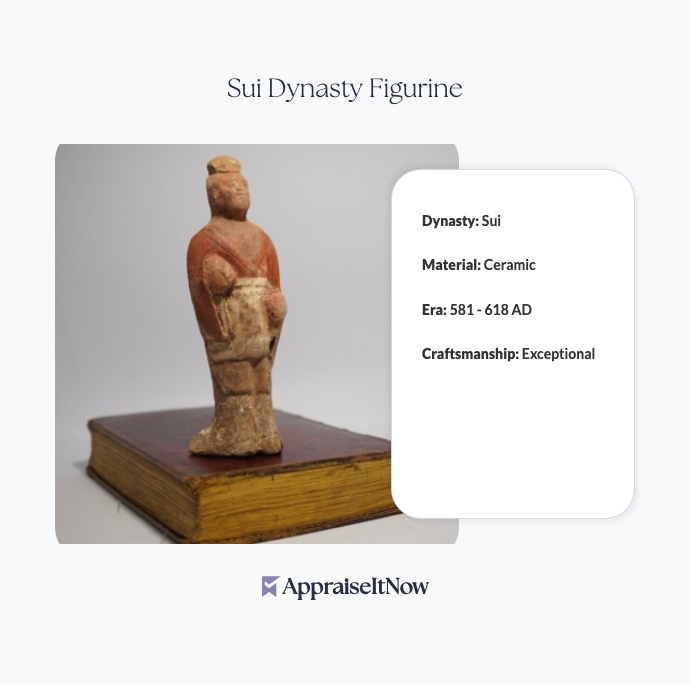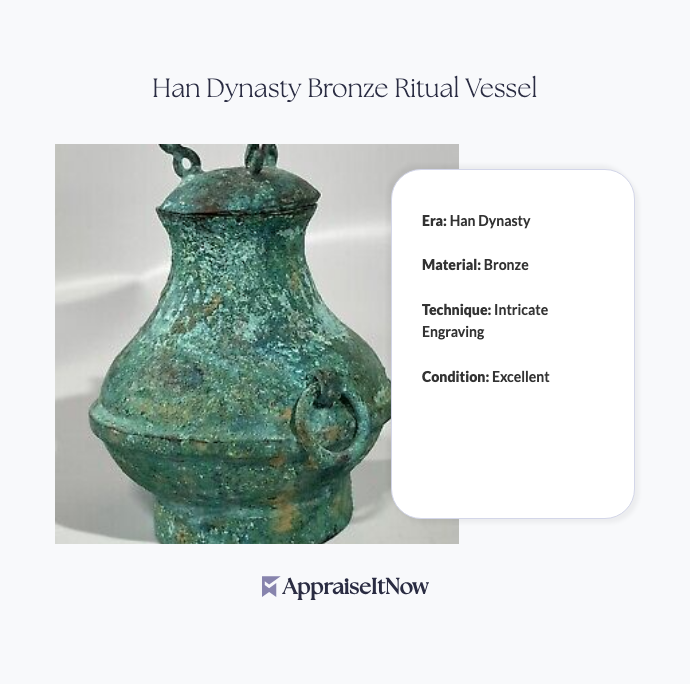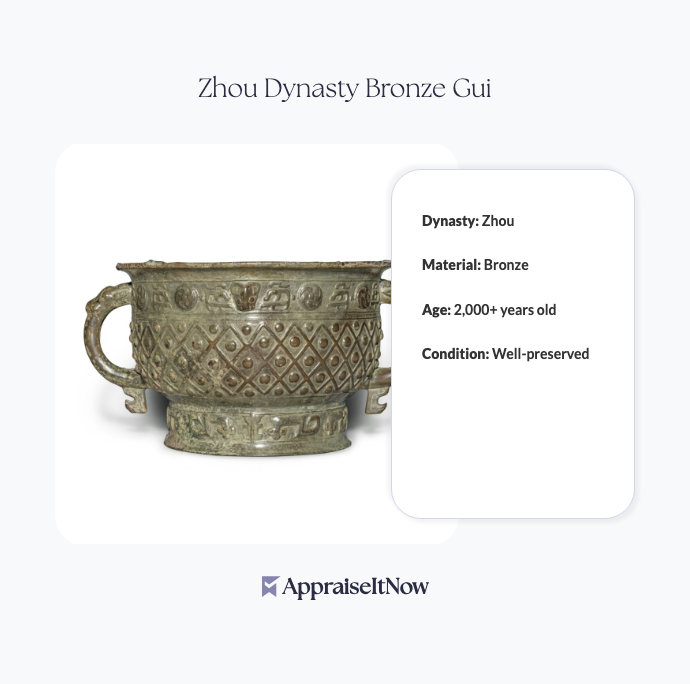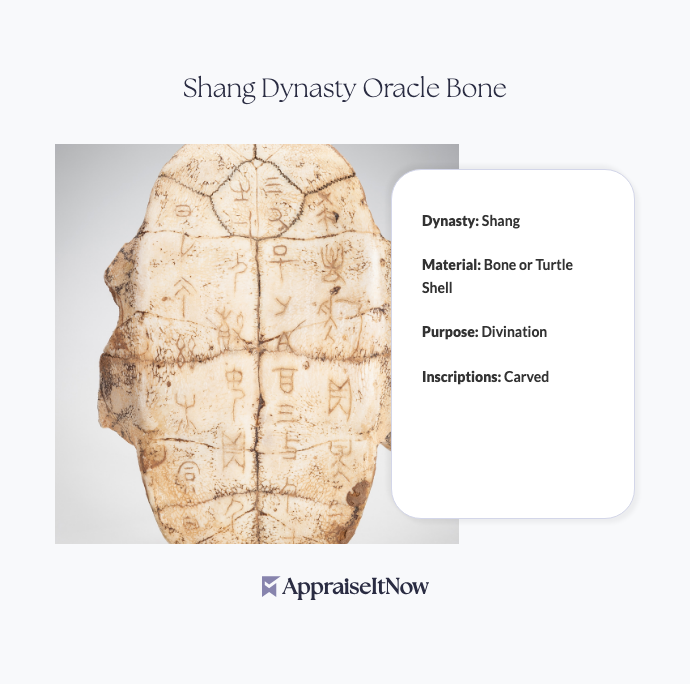<h1>How to Get Your Ming Dynasty Vase Appraised</h1>
<p>If you've inherited a blue and white vase or suspect you own a valuable Ming Dynasty piece, understanding the appraisal process is essential. A Ming Dynasty vase can range from <strong>$20,000 to $30,000</strong> depending on authenticity, condition, and provenance—making professional evaluation critical before buying, selling, or insuring your piece.</p>
<h2>Understanding Ming Dynasty Vases and Their Value</h2>
<p>The Ming Dynasty spanned from 1368 to 1644, and its ceramic artistry remains unmatched. Your vase likely features the iconic <strong>blue and white porcelain glaze</strong> that defines the era, with intricate floral and geometric patterns showcasing exceptional craftsmanship. But not all pieces are created equal—determining whether your blue and white china is valuable requires expert knowledge.</p>
<p>First-produced in the 14th century, these vases became highly sought-after by collectors worldwide. The blue and white porcelain pattern you see has a specific name: <strong>underglaze blue decoration</strong>, a technique perfected by Ming potters that remains the hallmark of valuable pieces today. Understanding why Ming vases are blue helps contextualize their value—the blue pigment came from cobalt imported primarily from Persia, making it expensive and therefore a marker of quality production.</p>
<div class="callout tip"><p><strong>Collector's Insight</strong></p>
<p>Vases with rare unit marks or imperial seals can command premiums of 30-40% above standard valuations. Documentation of these marks is crucial during appraisal.</p></div>
<h2>Identifying an Authentic Ming Dynasty Vase</h2>
<p>Before seeking professional appraisal, you should understand how to identify a Ming dynasty vase. Authentic pieces display specific characteristics that separate valuable antiques from reproductions and later copies.</p>
<p>Examine your vase's <strong>base and markings</strong> carefully. Genuine Ming vases typically feature reign marks (usually six characters arranged in two columns), though unmarked pieces can still be authentic. The glaze should show age—genuine pieces often display a slightly uneven color and may have small imperfections that machine-made fakes lack. Weight and density matter significantly; authentic porcelain feels substantial and durable, while reproductions often feel lighter or more fragile.</p>
<p><strong>Colors were limited during the Ming Dynasty.</strong> Beyond the characteristic blue and white, authentic Ming porcelain vases appeared in celadon green, copper-red, and monochromatic glazes, though blue and white remains most common. Later Chinese porcelain from different dynasties shows different color palettes and decoration styles, helping experts date and authenticate your piece.</p>
<p>The question of how much is a real Ming vase essentially depends on specific factors: are the decorative patterns hand-painted or underglaze? Do the proportions match documented examples? Has the piece been professionally studied or documented in auction records? These details significantly impact whether your vase falls into the $20,000-$30,000 range or requires recalibration.</p>
<div class="callout note"><p><strong>Authentication Reality</strong></p>
<p>Are there fake Ming vases? Yes—numerous reproductions exist from the Qing Dynasty onwards and modern copies from the 20th century. Professional appraisers have access to comparative databases and testing capabilities essential for distinguishing authentic pieces.</p></div>
<h2>Key Factors That Determine Ming Vase Value</h2>
<p>Several variables dramatically influence your Ming Dynasty vase's appraisal value. Understanding these factors helps you prepare realistic expectations before meeting with experts.</p>
<p><strong>Condition is paramount.</strong> A vase displaying its original glaze with minimal repairs will appraise significantly higher than one with visible cracks, heavy restoration, or substantial losses. Chips at the rim or base, while common in centuries-old pieces, reduce value proportionally to their severity. Professional restoration that maintains authenticity may have minimal impact, while aggressive repairs can diminish value by 20-50%.</p>
<p><strong>Provenance and documentation</strong> matter enormously. If you know your vase's ownership history, previous museum exhibitions, or appearance in auction catalogs, include this information during appraisal. Pieces with clear ownership chains and documented histories command premiums over unprovenanced examples. The most valuable Chinese pottery marks authenticate the piece and enhance its investment value—this is why collectors pursuing <a href="/types/antique-artwork">antique artwork</a> appraisals prioritize documented provenance.</p>
<p>Size and form affect valuation. Larger vases with elaborate decorative schemes generally command higher prices than smaller bottles or jars. The quality of the brushwork matters—finer, more detailed painting indicates superior craftsmanship and higher values. Additionally, the specific blue tone matters; cobalt blues range from grayish to brilliant, with more saturated blues typically indicating higher quality.</p>
<h2>How to Know If Your Vase Is Worth Money</h2>
<p>Wondering how do I know if my vase is worth money? Start with visual assessment, then seek professional evaluation. Your vase merits appraisal consideration if it displays these characteristics:</p>
<ul>
<li>Hand-painted blue and white decoration with complexity beyond mass production</li>
<li>Weight and density consistent with porcelain (not pottery or stoneware)</li>
<li>Base markings or reign stamps, even if partially illegible</li>
<li>Age appearance including glaze craquelure and appropriate patina</li>
<li>Elegant proportions suggesting imperial or high-quality production</li>
<li>Provenance documentation or known acquisition history</li>
</ul>
<p>Conversely, machine-made uniformity, overly bright glazes, or inconsistent decoration typically indicate reproductions or later pieces. The most common reproduction period for Ming-style vases spans the 18th-19th centuries (Qing Dynasty), making it critical to distinguish between authentic Ming and later imitations. This is precisely why professional appraisal services focusing on <a href="/blog/appraisals-for-fine-porcelain-and-ceramics-valuing-delicate-artistry">fine porcelain and ceramics</a> exist—the expertise required exceeds casual collector knowledge.</p>
<h2>Finding a Qualified Appraiser for Your Ming Vase</h2>
<p>How do I get my Chinese vase appraised? Begin by seeking appraisers with specific expertise in Asian ceramics. Look for credentials from recognized organizations including the <strong>American Society of Appraisers (ASA)</strong>, <strong>International Society of Appraisers (ISA)</strong>, or <strong>American Association of Professional Appraisers (AAA)</strong>. These certifications indicate adherence to <strong>USPAP standards</strong> (Uniform Standards of Professional Appraisal Practice), ensuring your appraisal is defensible for insurance, legal, or sale purposes.</p>
<p>Specialized expertise matters significantly. General antique appraisers may lack the technical knowledge to properly evaluate Ming Dynasty ceramics. Instead, seek professionals who specialize in <a href="/blog/unveiling-the-world-of-asian-antiques-appraising-chinese-japanese-and-southeast-asian-art">Asian antiques</a> or Chinese ceramics specifically. These experts understand the nuanced differences between periods, can recognize quality markers, and have access to comparative sales data for accurate valuation.</p>
<p>Platform services like <strong>AppraiseItNow</strong> simplify this process by connecting you with credentialed specialists across the U.S. who understand Ming Dynasty vases specifically. You can submit photographs, descriptions, and documentation securely online, then receive certified appraisals from experts with proven track records in <a href="/blog/appraising-asian-art-and-antiques-understanding-cultural-significance-and-value">appraising Asian art and antiques</a>.</p>
<h2>What to Expect During the Appraisal Process</h2>
<p>Professional appraisers will examine multiple aspects of your vase. They'll assess condition using standardized grading systems, photograph the piece from multiple angles including the base and any markings, and research comparable sales through auction databases. The appraiser may ask about your vase's acquisition history, any documentation you possess, and whether you've had prior evaluations or professional cleaning.</p>
<p>Most appraisals include high-resolution imaging, detailed written descriptions of physical characteristics, and market analysis supporting the final valuation. For insurance purposes, appraisers typically provide <strong>replacement value</strong> estimates—essentially what it would cost to acquire a similar piece on today's market. This differs from estate or liquidation valuations, which may reflect forced-sale scenarios.</p>
<p>The timeframe typically extends 5-10 business days from submission to report delivery, though complex pieces or those requiring authentication testing may take longer. Fees vary based on the item's estimated value and appraisal complexity, but typically range from $200-$500 for ceramic pieces through professional services.</p>
<div class="callout tip"><p><strong>Preparation Tip</strong></p>
<p>Before your appraisal, gather any documentation including purchase receipts, previous appraisals, exhibition catalogs, or auction results mentioning your vase. This significantly enhances the appraiser's ability to establish accurate valuation and provenance.</p></div>
<h2>Ming Dynasty Vases in Today's Collector Market</h2>
<p>The Ming Dynasty vase market remains remarkably strong. Collectors continue seeking these pieces for investment, museum display, and personal enjoyment. Contemporary auction results show authenticated Ming blue and white vases regularly achieving five-figure prices, with exceptional examples surpassing $100,000 at major auction houses.</p>
<p>Recent market trends show sustained collector interest, particularly for pieces with exceptional provenance or rare form variations. Understanding the broader <a href="/types/memorabilia-and-collectibles">memorabilia and collectibles</a> market context helps position your vase appropriately. Unlike some antiques subject to fashion-driven demand fluctuations, Ming Dynasty ceramics maintain steady appreciation due to their historical significance, limited supply, and fundamental appeal to serious collectors.</p>
<p>The role of provenance in appraisals cannot be overstated—pieces with documented exhibition history or auction records command substantial premiums. If your vase has appeared in major sales or museum collections, professional documentation of this history during appraisal is essential. This connects to the broader principle of <a href="/blog/exploring-the-role-of-provenance-in-art-appraisals-assessing-historical-significance">exploring the role of provenance in art appraisals</a>, where ownership documentation creates value beyond the object itself.</p>
<h2>Insurance and Legal Documentation</h2>
<p>Whether for insurance purposes, estate planning, or personal records, a certified appraisal provides essential documentation. Insurance companies typically require professional valuations for items exceeding $10,000 to justify coverage levels. A detailed appraisal report protects you in case of loss, theft, or damage by establishing the item's replacement value before an incident occurs.</p>
<p>For estate purposes, appraisals ensure fair asset distribution among heirs and provide documentation for tax valuations. Legal proceedings—whether dispute resolution, divorce settlements, or probate matters—often require professional appraisals as admissible evidence. The USPAP-compliant format used by credentialed appraisers ensures your documentation meets legal standards across jurisdictions.</p>
<div class="callout note"><p><strong>Key Takeaway</strong></p>
<p>A certified appraisal of your Ming Dynasty vase provides accurate valuation ($20,000-$30,000 range for quality examples), professional documentation accepted by insurance companies and legal institutions, and confidence that you understand both the historical significance and monetary worth of your valuable ceramic treasure.</p></div>







.avif)







